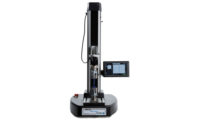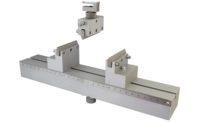Deciding whether to purchase a force tester for basic testing or a material tester for advance testing could be a challenge based on the multitude of options and functions which are available today to meet your test requirements. Many parameters come into play when it comes to choosing the right tester for the intended purpose. In short, advanced functions and capabilities are what separates a force tester from a material tester but it is a bit more complicated than that. In this article, we will dive into the differences between the two to help you choose which one would be the right fit for your specific needs.
Where are Force Testers and Material Testers Used?
Force testers are commonly used in production environments for simple tests, while material testers are found mostly in quality control, research and development environments. A force tester is designed for basic testing where a very high accuracy of force measurement is not needed and position control is not required. Functionality is basic. Simple controls are used for jogging the cross head and adjusting travel speeds using software controls with minimum calculations and functionality. Force testers include a force gage which may have an integral or external loadcell that is simple to use and to run in production environments.
Material testers, on the other hand, include precision motion controls with external loadcells connected to the tester’s internal signal amplification electronics. Material testers use advanced electronics to communicate between modules via CAN Bus network hardware that allows microcontrollers and devices to communicate at high data rates as found in systems used in the automotive and aviation industries. Material testers include advanced calculations as well as expanded options such as extensometers and thermal chambers for measuring elongation and measurement at controlled temperatures.
Force testers and material testers have expanded into packaging, paper, textiles, medical, pharmaceutical, plastic, metal, food/beverage, and aerospace industries to assure that strict product performance and reliability standards are met.
Force tester and material tester frames are available in both single column and dual column configurations depending on the capacity on the frame. Single column and dual column testers range from manual stands to electro-mechanical stands, to fully automated material testing machines.
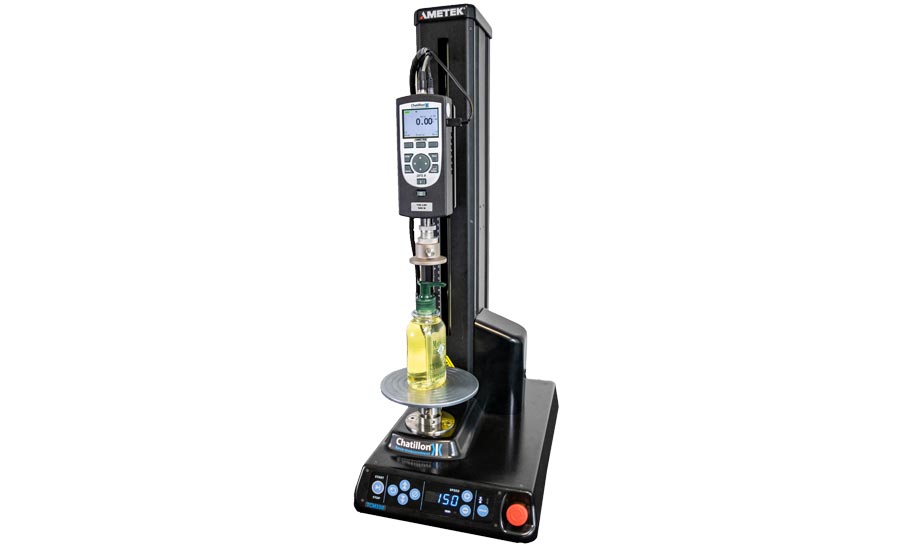
FORCE TESTERS
Force testers are split into three categories: manual, electromechanical, and digital force testers.
Manual Test Stands with a Force Gage: this tester combination is the most economical solution if your test does not require travel to be at a constant speed and that results are focused on peak loads. The digital or mechanical force gage may be mounted to either the adjustable or fixed arm of the tester. The movement of the arm is either driven with a hand wheel or lever actuator. Most manufacturers offer displacement or position measurement options mounted to the manual frame.
Electro Mechanical Test Frames with a Force Gage: the electro mechanical solution, also known as a motorized test solution, integrates a motor drive with adjustable travel speed. The force gage is typically mounted to the motor-driven arm with the option of a remote loadcell. Adjustable mechanical limit switches allow the user to set the upper and lower travel areas. This also prevents accidental collision into grips and fixtures mounted to the tester. A digital force gage can be connected to the tester to stop the tester when it reaches a pre-selected force.
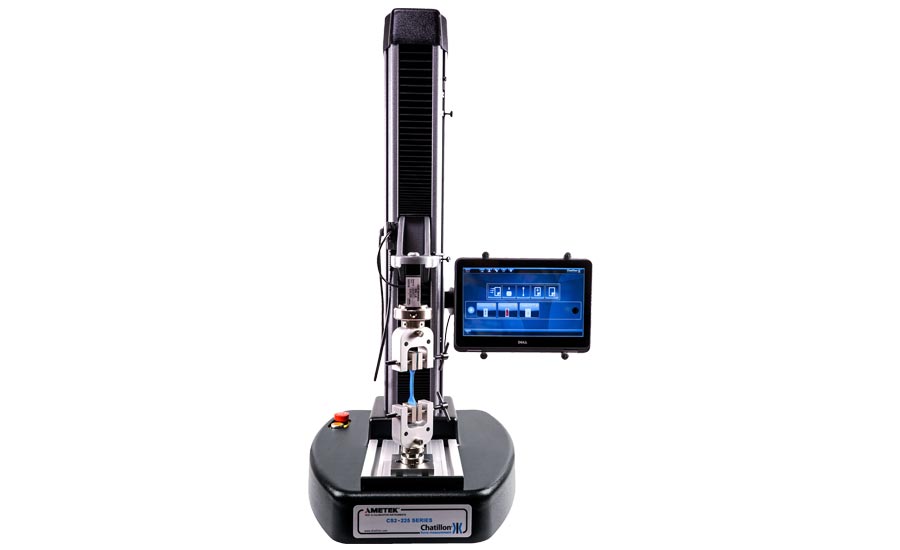
Digital Force Testers: Digital force testers use a load cell instead of a force gage with integrated electronics. Crosshead position control uses stepper or servo powered motors to assure constant speeds and accurate positioning of the crosshead. The user interface software is loaded onto a PC in the form of a tablet or 2-in-1 PC attached with an arm attached to the frame or set aside stand-alone PC. Staged tests can be programmed to separately control loads, positioning, and speed of the tester for each phase of the test. Basic calculated results as averaging, standard deviation, and spring rates can be exported to the local PC or into a QSM network.
The Force Gage: There are two types of force gages that may be adapted to a mechanical or electro-mechanical test frame: digital and mechanical. The mechanical gages have a dial indicator with a second needle or mechanism to capture peak loads. The basic digital gages have peak force detection, analog and digital outputs, and unit of measurement selection. Most digital force gages include basic statistical calculations, a color display, password protection, and capture data points with test results. Certain models include test software to communicate and interface with PCs.
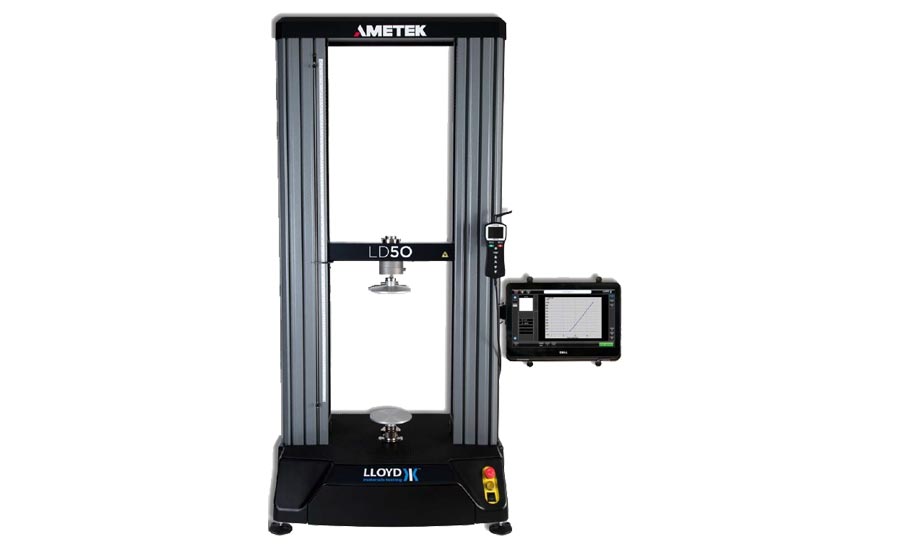
MATERIAL TESTERS
Material testers combine the most accurate load, strain, and displacement measurement electronics available when compared to force testers. The load measurement accuracies can be to ±0.5% of reading or better, down to 1/500 of the load cell capacity. Strain measurement accuracies are to ±0.5% of reading down to 1/100 of full range with ASTM E83 class B or with an ISO 9513 class 0.5 extensometer. The crosshead positioning measurement accuracy could be to ±0.02 mm or 0.05% accuracy of displacement while using servo motors in a closed loop system. Crosshead speed accuracy, at zero or constant load, could perform as precisely as ±0.05% of set speed. The accuracies will vary depending on the manufacturer but will always remain better for a material tester versus a force tester. Material testing machines need to have accurate measurement capabilities to be able to perform within the most stringent ASTM, ISO, BS, EN, DIN, and JIS Standards. Extensive calculations such as user calculations, modulus, yield, break, slack/compliance, correction, Poisson’s Ratio, area reduction, break location, and seam slippage are among some of the many calculations available for material testers. Additional typical applications include evaluating the strength, modulus, elongation, yield, and other properties of textiles, paper, wood, adhesives, polymers, ceramics, etc. The material testers’ versatile software packages are designed for practically any standard testing scenario.
Material testers with software are able to capture from digital and analog sources external sensors outputs and react in an active or passive manner. This includes displaying readings on the same screen as the typical force and displacement. In an active manner, and in a closed feedback loop, the tester is capable of being controlled from external signals using load or position feedback. In a passive manner, readings from the sensor can be included and displayed on the live screen with the load and displacement values. These signals may originate from different sources as coming from temperature probes, video extensometers, dimensional LVDTs, or any other digital or analog source. External ASCII commands may also be used to automate and control your tester in production environments.
Without going into the full capabilities of force testers and material testers, the intent of this article is to steer future buyers in the right direction while providing basic guidelines towards making the right decision, with the best supplier able to meet their present and future testing needs.

